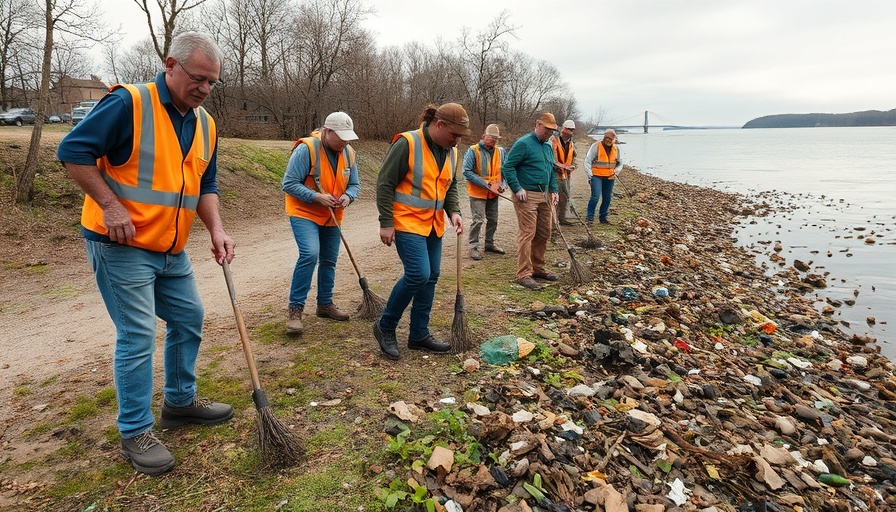
Rallying for a Cleaner River: Community Efforts in Cincinnati
On a sunny Saturday morning, the echoing waves of the Ohio River served as a backdrop for an inspiring gathering of volunteers along its banks. Enthusiasts from Cincinnati united for the second Ohio River Sweep of the season, organized in collaboration with the Ohio River Valley Water Sanitation Commission (ORSANCO). This community-driven initiative not only aims to clean the river but also fosters a sense of pride and responsibility among the participants.
Volunteer Voices: Learning and Giving Back
Among the dedicated volunteers was Miami University senior Andrew D'Allesandris, who shared how his leadership class lessons were put into action during the cleanup. "We are trying to use some of the skills and information that we've learned in leadership class and try to apply them to a real-life situation," he said, emphasizing the transformative nature of such community engagements. It's evident that while they work to clean the river, they also learn vital lessons about teamwork and civic responsibility.
The Impact of Weather on Our Environment
This season's cleanup holds even greater significance due to the recent fluctuations in weather. Great Parks Volunteer Engagement Specialist Joe Von Allmen highlighted how snowfall and rainfall can contribute to litter accumulation along the riverbanks. "When those levels of the Ohio River rise, that brings in all the litter. It's important to keep these areas clear for the critters who call it home," he remarked. These concerns underline the interconnectedness of our ecological efforts and the varying elements of nature.
A Community Driven by Pride
D'Allessandris expressed a sentiment that resonated with many volunteers: the feeling of pride in one’s local environment. “It doesn’t take much to come out and give a little time,” he said, stressing how collective efforts can lead to a significant impact. Volunteers gathered not just to pick up trash but to foster community connections and a shared vision for a cleaner, brighter future for the Ohio River.
The Numbers Speak: Past Achievements and Future Goals
The Ohio River Sweep has seen tremendous success in previous outings. Last year, the volunteers collected close to 180,000 pieces of litter—an impressive achievement that, according to Von Allmen, could almost assemble a car from the parts found in the river. This year, the team of dedicated volunteers managed to collect 30 bags of trash, including notable items such as lumber and wheels. The tangible results of their labor serve as a reminder of the ongoing challenge to maintain a clean, thriving ecosystem.
Looking Ahead: Opportunities to Get Involved
For those inspired by this event, there are multiple opportunities ahead. Great Parks plans to hold its next Ohio River Sweep on July 12 at Fernbank Park. New volunteers are encouraged to join, as every hand contributes to a healthier environment and a more vibrant community. Engaging in such initiatives not only impacts the environment but also nurtures a sense of belonging and accomplishment within the community.
As these volunteers demonstrate, small acts can compound into significant change. Their commitment to cleaning the Ohio River extends beyond a single day—it's about building a sustainable future through ongoing community engagement. So, consider taking part in the next cleanup event and contributing to a cause that resonates far beyond local waters.
 Add Row
Add Row  Add
Add 




Write A Comment